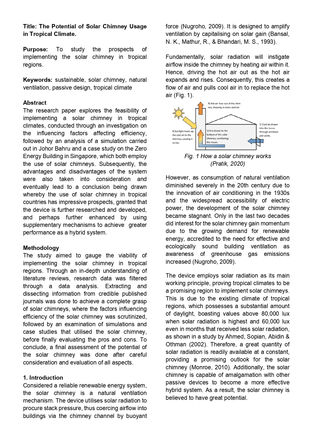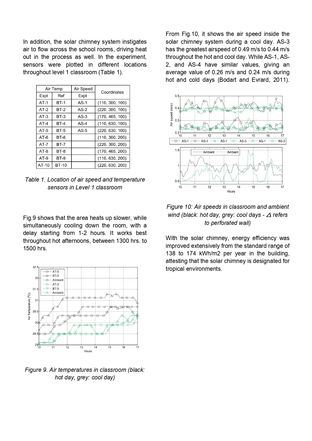top of page
Ryan Ng Zhen
0334094
BACHELOR OF SCIENCE (HONOURS) IN ARCHITECTURE
PORTFOLIO
ARCHITECTURE & ENVIRONMENT
(ARC 60504)
HUMAN - SPACE - CLIMATE
: ASSIGNMENT ONE
Thermal comfort is defined in British Standard BS EN ISO 7730 as: ‘that condition of mind which expresses satisfaction with the thermal environment.’ There is no absolute standard or index of parameters of thermal comfort. This is not surprising, as humans can and do live in a range of climates from the tropics to high latitudes. So the term ‘thermal comfort’ describes a person’s psychological state of mind and is usually referred to in terms of whether someone is feeling too hot or too cold. Thermal comfort is very difficult to define because you need to take into account a range of environmental and personal factors when deciding what will make people feel comfortable. Perceptions of this environment are affected by air temperature, radiant temperature, relative humidity, air velocity, activity and clothing. More general definitions of comfort include a sense of relaxation and freedom from worry or pain. These factors become parameters where human perception of the thermal environment is concerned.

Through this project, I am able to study the concept of thermal comfort via physical experimentation and data collection. I attained the knowledge on how to identify all the factors affecting human's thermal comfort and ways to solve them. Architectural designs and elements are immensely crucial for good ventilation, as well as energy consumption. The climatic studies of a particular site are also mandatory before any architectural designs.
RESEARCH ESSAY - SOLAR CHIMNEY
: ASSIGNMENT TWO
Increasing concerns about global warming present the building industry with a challenge to cut its energy consumption. Climate control systems, namely ventilation, cooling and heating can account for as much as 70% of the total energy use. However, this part of the energy consumption can be reduced significantly by employing passive environmental solutions. For example, a well-designed naturally ventilated building can consume only a third of the energy consumed by an air-conditioned building, while arguably providing a comparable level of comfort. This is because passive design allows buildings to adapt more appropriately to their local climates and take better advantage of natural energy resources, such as wind and thermal buoyancy, to help condition their interior environments. Furthermore, passive, naturally ventilated buildings have potential to provide more pleasant and healthier environments for the occupants compared to their mechanically ventilated counterparts.
Our group was given the opportunity to carry out in-depth and thorough research on the solar chimney as a passive design. Our main goal of this research is to find out whether solar chimney is suitable to be utilised and applied in tropical climate environments and if not, what can we do to improve the performance of it. After numerous findings, we were able to conclude that solar chimney is an obscure device especially in tropical climates due to the 20th century technology inventions. However we obtained that its performance is inadequate as an individual but once supported with other devices, it works great. Overall we concluded it by acknowledging the lack of physical studies and precedents, how it works better as a hybrid system, and it is in fact suitable to be applied in tropical climate.
bottom of page













